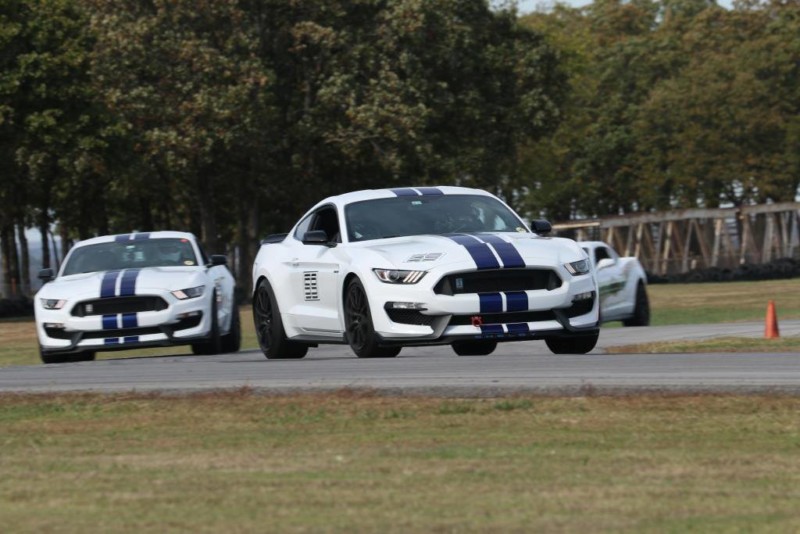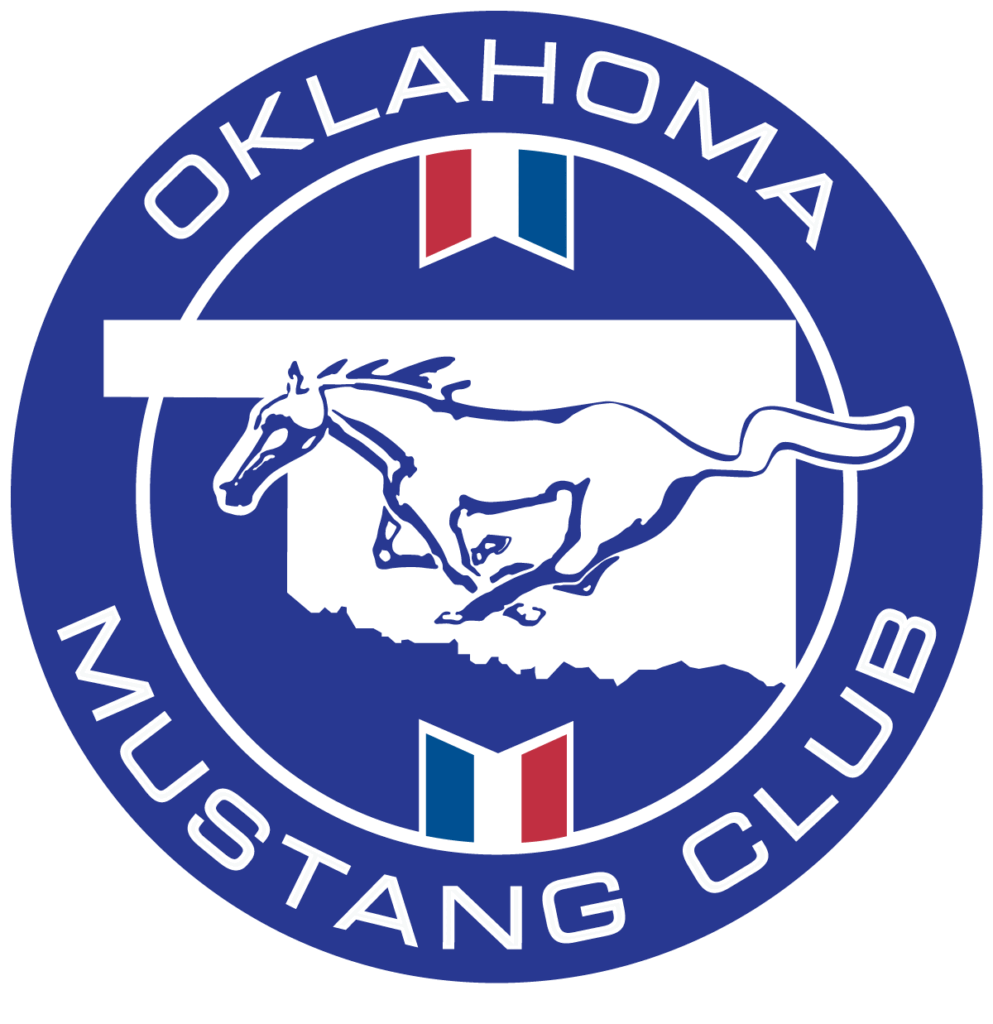HPDE INTRO
So you have your high-horsepower Mustang parked in the garage, all clean and shiny, but you’re looking for something more. Enter HPDE, otherwise known as the High Performance Driving Event. HPDE is a standard term used by many different organizations across the country and each organization has their own set of rules and road courses that they take over for a day or for a weekend.
HPDE is the place to start if you have zero experience at driving your vehicle on a race track. Drag racing on the street (illegal and dangerous), at a drag strip or running autocross events, while fun, do not prepare you for the mental and physical challenges faced on a road course. If you want to experience the thrill of lap after lap of high speed driving, but do so in a safe, controlled environment then you’ve come to the right place.
What HPDE is NOT. The High Performance Driving Event is non-competitive and instead encourages driver education, allowing someone to gradually learn how to drive and control their vehicle at speed. HPDE is not wheel-to-wheel racing and most groups that run HPDEs do not allow passing in turns or passing is restricted based on which run group you’re placed in. Check the rules and regulations for each organization.
GETTING STARTED
So where to begin? First, you’ll want to figure out what tracks are near you and when HPDE events are scheduled. A good source of info is the MotorsportsReg website. Here you can find events by location, who is running the track and how to register. Often times drivers sign up two or three weeks before an event is scheduled, especially if inclement weather is a possibility. Check the weather, find a track you want to drive and get registered! It really is the most difficult step. Do keep in mind that some tracks are extremely popular, so you may have to register months in advance.
Speaking of beginnings, HPDE organizations recognize that everyone has a first time on track and in most cases, provide you with an instructor. This person will generally be introduced to you first thing in the morning and will accompany you all day, providing feedback on driving technique and skills. Generally the instructor has two goals in mind. First and most importantly, they want to make sure you are driving in a safe manner. Second, they should ensure that you are having fun!
The following video is entitled “Getting Started in Road Racing”, but it also describes the very beginning of most driving careers, which is the HPDE1 run group. Everyone has a first time at the track! This video was taken from the NASA HPDE page, but they have a YouTube channel as well, so go check them out and be sure and Like and Subscribe.
NASA has a tiered system that allows for all levels of experience, from first-timers to full on race car drivers and their system is structured such that each tier up is more competitive.
VEHICLE RUN GROUPS
Depending on what organization running the event, designators for vehicle run groups will differ. For example, the local Oklahoma track, Hallett Motor Racing Circuit assigned another name to their HPDE: High Speed Touring (HST). Hallett separates their drivers into HST A (advanced drivers) and HST B (beginner/intermediate drivers). Other organizations, such as Edge Addicts and Chin Motorsports, use colors to differentiate their run groups. Chin reserves the Red Group for Advanced Solo and Blue Group is designated Intermediate Solo, etc.
We will use the National Auto Sport Association (NASA) classifications for clarity. Each of the following groups can be translated and applied to other organization rules in some manner. This was taken from NASA HPDE.
The student driver participants are separated into four basic groups: One, Two, Three, and Four based on their HPDE driving experience level . There are no speed limits in any of the groups, and novice drivers are assigned instructors for safety reasons.
Group One (HPDE-1)
This is where you begin. This is one on one guidance from experienced instructors, as you learn to control your car and yourself. Your instructor will provide you with guidance as you learn to drive at the limit. You will address how to approach a turn, the fast way around it, what gear should you be in, how to brake, and how to exit. The session generally includes a lead-follow session. Passing is very limited in the Group 1 Sessions.
Group Two (HPDE-2)
Your instructor has determined you can drive on your own and with less supervision. You apply what you learned in the Group 1 sessions to get more practice. Group 2 is often mixed with Group 1 and is for those drivers that want some more Group 1 seat-time, but do not need an instructor.
Group Three (HPDE-3)
You have progressed to the world of high performance driving. The passing rules in group 3 are not as strict. You must learn to share the track at high speeds with others.
Group Four (HPDE-4)
This is only for the more experienced drivers. No passing restrictions, except those of good judgment and rules of the road etiquette, apply. You and your peers are now experiencing the joys of doing it right in a relatively safe and controlled environment! You can now enjoy high performance driving at its finest.
HPDE PASSING RULES
Where on track a pass is allowed depends on the run group and the rules of the organization running the event but in general, no matter the restrictions, a “point-by” is almost always required in the HPDE environment. The following HPDE rules on passing information was taken from this NASA site page: Passing.
The goal in HPDE is to improve and develop driving skills. Since passing is the most likely time to have contact, and since the consequences of having contact are severe, the first rule is, “If in doubt, back out!”
It is your responsibility to know the rules pertinent to passing in your group. They will be covered in the drivers meeting. They are not complicated, but you must understand them. If you are on the track, contemplating a pass, but aren’t sure if it complies with the rules, remember “If in doubt, back out”. After the session, clarify the situation with your instructor, or at the download session.
The following statements are only a guideline. The actual rules will be spelled out at your drivers meeting. What is said at that meeting supersedes anything stated here.
Group 1 and 2 passing rules allow passing only on specified straights. All passes must start after the car has clearly left the corner leading onto the passing straight, and must be complete before the braking zone of the following corner. Sometimes there are specific reference points on the track, such as “the pass must be complete by the end of the pit wall”.
If you are being passed, a “point by” is strongly encouraged. This tells the passing driver you are aware they are coming by, and tells them where you expect them to pass. The “point by” is accomplished by pointing to the side you want to be passed on. As the driver being passed, part of your responsibility is to make the pass easy for the overtaking car. This means be predictable. Do not do anything erratic.
Group 1 & 2 sessions are not intended to teach passing skills. These sessions are intended to teach the basic skills involving driving the line and some beginning car control techniques. Passing skills begin in group 3 and are really developed in group 4. Passing in group 1 & 2 is necessary because of the differences in the capabilities of the cars and drivers.
Passing etiquette in group 1 & 2 includes letting faster cars go by easily. If you drive a powerful car, it is quite easy to keep less powerful cars behind you, since they are only allowed to pass in the straights. If you blast away down the straight, but that little rice rocket is all over you again 2 turns later, let them go in the next passing zone. You might learn something by observing why the guy is so much faster than you through the corners. You will also be much less likely to receive a black flag, followed by a lecture from an official.
If you do get held up by someone who won’t let you by, or if you are ready to go a little quicker, but there is a big knot of traffic in front of you, you can pull onto pit road, and wait for an open space on the track. The official feeding traffic onto the track will signal you when there is a big gap. You can also use pit road this way if you notice several cars stacking up behind you..
The blue flag (with yellow diagonal stripe) is the passing flag. It is given to let a slower car know a faster car is catching them. If you are given this flag, you should already be aware that a faster car is approaching. You should let the car (or cars!) by in the next passing zone.
Although passing is not taught in group 1 and 2, the basic skills necessary to allow safe passing begin here. First is the awareness of other cars on the track. Second is conditioning your reactions to allow or make a pass safely, by not doing anything erratic, and by being predictable. Although it is the overtaking drivers responsibility to make a safe pass, the driver being passed must be aware of cars around them, leave a clear passing lane, and not force the pass to be made late in the passing zone.


